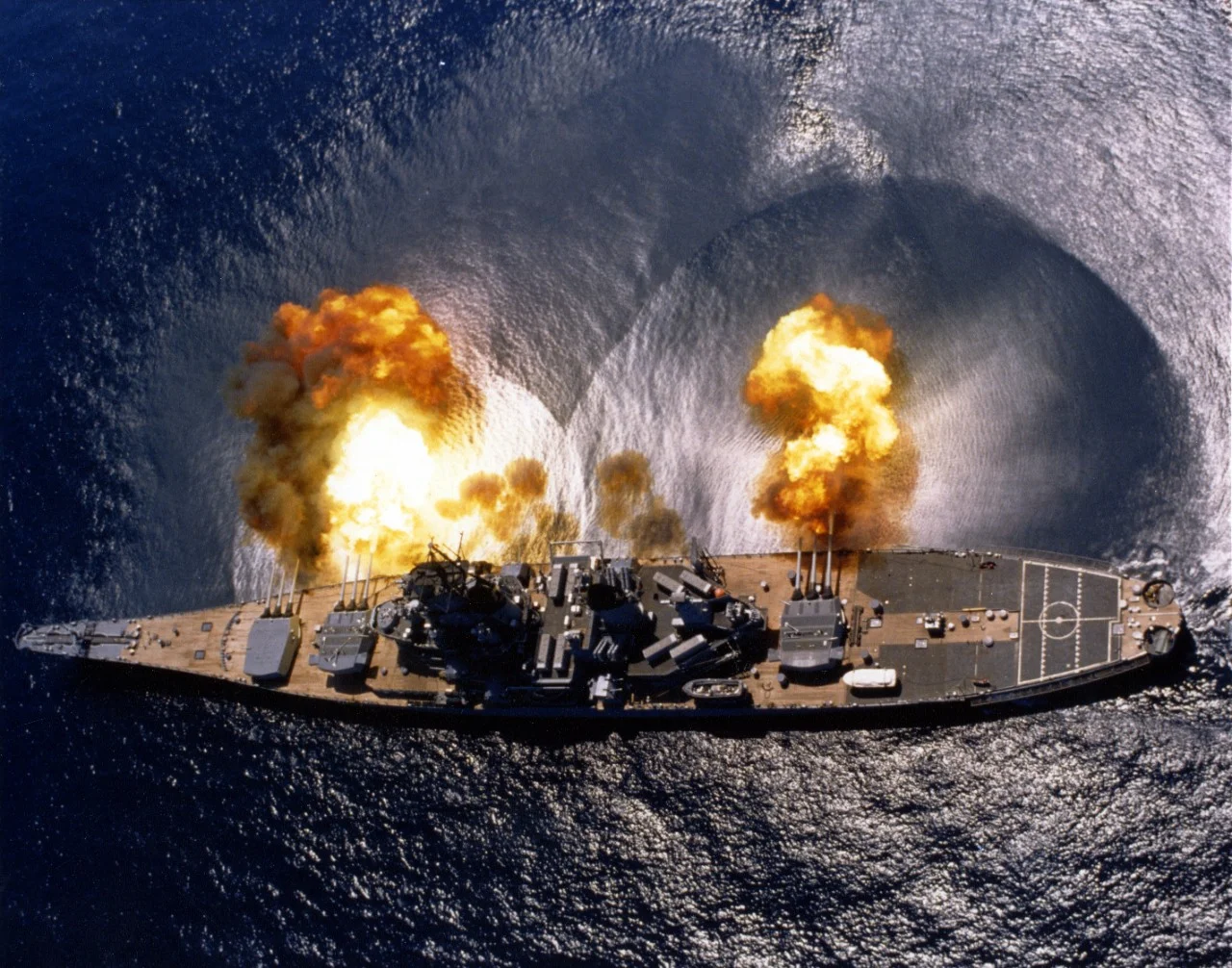High Speed Transport… Destroyers?
Even before World War II, Navy planners recognized the need for an island-hopping campaign and the extreme demands that would be placed on logistics. In parallel, the USMC was rapidly developing its amphibious and raiding doctrines. In 1938, the US Navy converted an old destroyer, USS MANLEY, by removing some of its boilers, guns, and torpedo tubes to make room for troop and cargo space. The result was christened a “High Speed Transport” or Auxiliary Personnel Destroyer (APD). It reached higher speed than cargo ships. It retained some self-defense firepower, but sacrificed its best anti-ship weapons (torpedoes) to carry landing craft that could be used by the 120 Marines who could be billeted aboard. The USMC quickly realized the capability of these ships to operate in the dangerous littoral environment, and requested more from the USN.
The first six APDs saw action off the Solomon Islands as Transport Division 12. After the disastrous Battle of Savo Island, the US controlled the air by day but the Japanese controlled the sea at night. To reach Guadalcanal, unload, and escape the dawn patrols of US aircraft, the Japanese ran the famous “Tokyo Express” using fast destroyers of their own, sometimes towing barges and sometimes accompanied by transports or large warships, to race down “the slot” between the island chains and deliver their supplies. The Japanese destroyers, however, were generally unmodified designs and simply dropped supplies over the side near shore. While the Tokyo Express tends to be remembered, the US practiced almost the same tactics using the new APD Force. The US APDs, however, had cargo handling facilities and boats to ensure the supplies made it ashore, unlike the Japanese ad-hoc system. They were better able to achieve their mission due to the sacrifices made in their firepower. This also came at a cost. While more efficient at their mission as combat transport, half of the USN’s Transport Division 12, three of six APDs, were lost to air attack or encounters with their better armed Japanese equivalents while delivering supplies to the beleaguered Marines on Guadalcanal.
The Navy was not deterred by this result. Having seen the utility of these small, lightly armed combat transports, the USN ordered 26 more conversions. Transport Division 13 was formed with 5 converted destroyers (including one previously converted to sea plane tender), and assigned to the European theater where they performed decoy operations, supported Special Forces teams assaulting small islands, and shuttled reinforcements and supplies. Transport Division 16 operated generally in the Southwestern Pacific Theatre, supporting MacArthur’s campaign leapfrogging along the coast of New Guinea. Transport Division 22 did similar operations and also used their high speed to rescue stranded US personnel and run down Japanese barges. After the first 32, scores more APDs were converted from destroyer escorts (DEs). Fast, agile, shallow draft, lightly armed, and eventually expendable, they proved ideal for moving along the coasts and small islands, deploying and supporting troops.
APDs also saw action in the Korean War. There APDs deployed CIA teams and they supported raids, amphibious assaults, and evacuations. Some stayed on until the Vietnam War, acting as mobile bases for SEAL teams and surveying littoral waters and beaches. However, as the platforms aged, all were eventually decommissioned, sold, or scrapped with no direct replacement. The Cold War Navy saw the need for carriers and submarines, but supplying small teams in littorals or needing swift combat transports did not seem likely in the 70s and 80s. The old DDs and DEs that had been converted to APDs, minesweepers, and sea plane tenders were no more.
With the end of the Cold War, both the rise in threats from small boats and drones in the littorals and the War on Terror caused the US Navy to review its need for vessels that could work in shallow, coastal waters effectively. After churning through the design and procurement process, what resulted was the “Littoral Combat Ship” (LCS) and its cousin, the High Speed Vessel (HSV), later reclassified as Expeditionary Fast Transports (EPF). These were vessels smaller than a destroyer, lightly armed (or unarmed in case of EPF), swift, and designed for shallow coastal waters. They were vessels with cargo capability, an unloading ramp, and a boat bay in the stern, making them small amphibious support ships. These vessels with a large flight deck inherited the role of “sea-plane tender” for its modern incarnation of helicopters and UAVs. These vessels are scheduled to be equipped with mine hunting sonars and drones. All this, however, comes at a cost in weapons and survivability. While the LCS classes are sometimes likened to Corvettes, they are more lightly armed both defensively and offensively than corvettes of other nations, even with the surface warfare module of 2 30mm guns, 24 Hellfire missiles, and anti-ship cruise missiles installed. The EPFs are unarmed, but could support armed drones and concept designs have added weapons, including railguns.
While the US Navy has never stated or implied it, the LCS is basically the inheritor of the APD legacy. They are swift combat cargo vessels that can be sent into harm’s way and shallow waters to support small teams individually, or a group of them can support a larger presence ashore. The LCS’s warfare modules allow it to perform other missions that DDs and DEs of World War 2 were converted to do: sub-hunting, aircraft support, mine sweeping. The LCS modularity simply allows the conversion to happen much more rapidly. It is not a ship meant to engage any combatants directly, or defend other vessels from attack. Neither were APDs. That is what destroyers were for. The USN currently has the 30th and 31st LCS on request for FY18, with hopes to produce a Frigate variant starting with hull 32. The 31 LCS is quite similar to the 32 original APDs of World War II.






